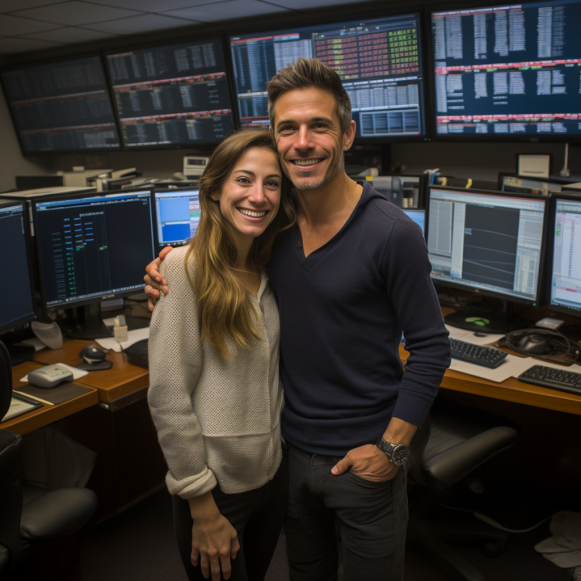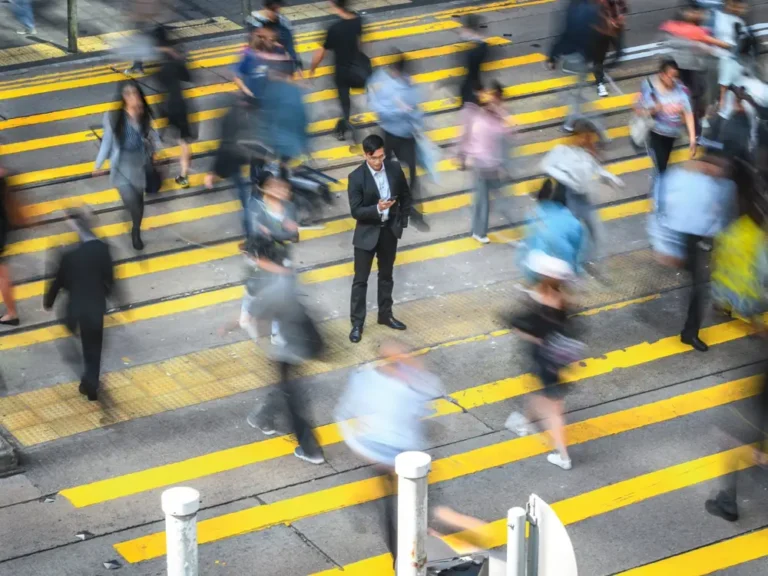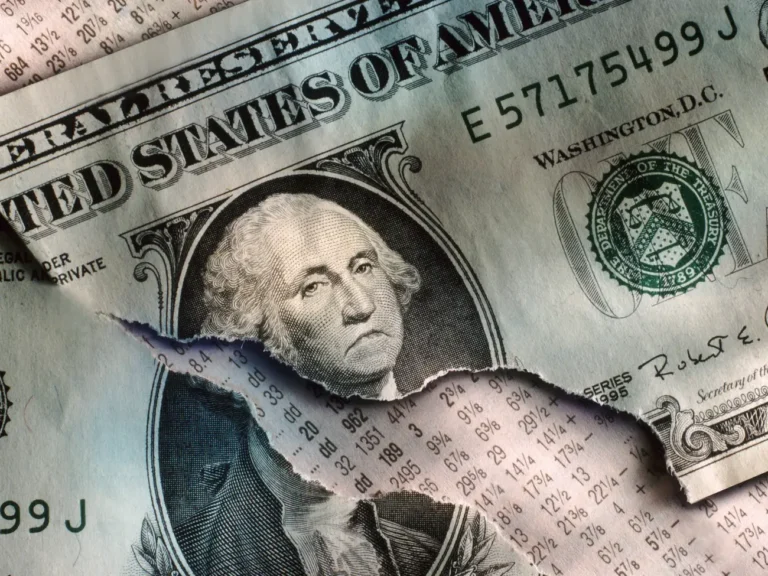America’s new ‘economic supercycle’After 15 years of slow growth, economists say America is headed for a chaotic new era.

No one’s going to sound an alarm, blast out a text message, or shoot you an email about it, but the US economy is undergoing a historic shift. We are leaving one long period of expansion — what economists refer to as a “supercycle” — and entering a very different one.
Over the past 15 years, the economy has been characterized by weak demand and low interest rates — a decade-and-a-half hangover from the Great Recession. Now, experts tell me, that is coming to an end. The world has changed, and we are entering an era of higher growth, creeping inflation, and geopolitical instability that will reroute the flow of money around the world. A new era has arrived, but it’s going to be bumpy.
The good news is that this new era looks as if it will be unencumbered by some of the problems that put a ceiling on growth during the previous era. The most salient feature of the old period, economists say, was the risk of deflation — the possibility that a lack of demand would cause wages and prices to spiral downward, a trap that is extremely difficult to escape. In an effort to avoid that fate, policymakers in Washington pushed interest rates down to zero and encouraged all kinds of risky behavior among investors, businesses, and everyday consumers. Investors trying to reach their benchmarks “had to creep out on the risk spectrum,” Josh Hirt, a senior economist at Vanguard, tells me. “Supercheap debt,” he says, made it easy for businesses to “overexpand and overhire.”
The pro-risk environment had some earth-shifting consequences. Silicon Valley put the internet on our phones, China blew a massive bubble in its property market, and the world started investing in renewable energy. But low interest rates did little to boost demand, and the economy consistently grew slower than it did before the crash, never notching above 3% GDP growth. It was only after the massive government stimulus, spurred by the pandemic, that the economy reached escape velocity, pushing up wages and starting to grow at a healthy clip.
Now, economists say, we’re entering a supercycle that will be characterized by three sweeping forces. First, higher interest rates will reward savers, making it more expensive to take risks. Second, geopolitical and economic volatility will generate inflationary effects, reintroducing the specter of soaring prices. And third, industrial planning will be increasingly influenced by national-security concerns, altering supply chains across industries. How low interest rates wind up settling will establish a new gravitational pull in global markets, recalibrating the forces that determine where the economy is most likely to grow — and where investment is most likely to flow.
The new supercycle “puts the economy in a completely new era,” says Silas Myers, the CEO of Mar Vista Investments, which oversees $4 billion in assets. He warns that an entire generation of investors, lenders, and entrepreneurs have failed to embrace the “profound impact” that the new economic era will have on their businesses.
“We were in a time that was less demanding and more forgiving,” Myers says. “But that time is ending.”
One of the clearest signs that a new economic supercycle has arrived is when the financial rules go topsy-turvy. The previous supercycle was ushered in when the Federal Reserve, in response to the destruction caused by the financial crisis, cut its benchmark interest rate to 0% — the first time the central bank went all the way to the bottom.
The structural shift sent shockwaves throughout the world. Yields on Treasury bonds tanked, meaning investors had to start taking some serious risks if they wanted to make money. This new adventurism pushed stocks higher and higher. Capital went flying into China and other emerging markets in record amounts — some $1 trillion in 2010 alone. Venture capitalists sank billions into companies like Juicero and WeWork that had no viable plan to turn a profit. And with interest rates so low, companies could suddenly load up on debt: From 2007 to 2017, global nonfinancial corporate debt doubled, to $66 trillion. Until the pandemic hit, inflation and wage growth both remained below 3.9%. The world had changed.
Something has scrambled the natural interactions of the marketplace. It’s as if you put your hand over a hot stove and your fingers turned ice cold.
Now, with the arrival of a new supercycle, money managers are once again being forced to adapt to a changing set of economic realities. Normally, when the Fed hikes interest rates rapidly, the stock market tanks. But that’s no longer true. From 2022 to 2024, as the benchmark federal funds rate shot up to 5.5% from 0.5%, the Nasdaq 100 and the S&P 500 soared by 23% and 22%. Higher interest rates also failed to spur widespread layoffs or crater the economy. Unemployment has stayed below 4.3%, and GDP growth has remained solid, defying fears of a recession. In short, something has scrambled the natural interactions of the marketplace. It’s as if you put your hand over a hot stove and your fingers turned ice cold.
One explanation for the economy’s topsy-turvy behavior is a change in what economists call the neutral interest rate — the optimal point for encouraging growth without triggering inflation. After the financial crisis in 2008, the economy was so weak that the neutral rate went to zero to encourage money to flow more freely. But now the market’s weird nature may be signaling that the neutral rate has risen above the Fed’s ideal target of 2%. That would explain why the Fed’s higher rates are no longer putting the brakes on growth. Fueled by the post-pandemic government stimulus, the economy’s baseline has shifted. Over at Vanguard, Hirt and his colleagues predict that the neutral rate will stay higher for the foreseeable future, eventually settling at about 3.5%.
“Even if we do dip below 3.5%, the Fed will be anchored at that higher rate,” Hirt says. “If the economy were to experience weakness and we have to cut rates, we still don’t think that means taking rates back to zero.”
Unless you’re a boomer, you’ve probably never experienced a world with this high a neutral rate. It changes the nature of risk, which changes what people decide to do with money on micro and macro levels. If you can get a decent return parking your money in ultrasafe government debt, why risk investing it in a startup or stomach the stock market’s volatility? This isn’t to say no one will be out here taking risks with their cash — it will just flow in different directions. That’s because consumers are in a better place now than they were in the era that emerged after the Great Recession.
The economy is “an extraordinarily diverse and dynamic animal,” Joe Quinlan, the chief market strategist at Bank of America, assured clients in a recent note. It’s “a $28 trillion hydra-headed behemoth that beats to the tune of many different sectors.” As the Fed’s higher rates were putting a strain on rate-sensitive sectors like housing — which makes up 16% of the economy — Big Tech and travel-starved households were spending money fast and loose. The experience showed that overall consumption can continue to rise even when significant swaths of the economy are struggling.
So what can we expect from the new economic supercycle? Like every cycle, it will have its upsides and downsides. Rising interest rates will make loans more expensive, forcing businesses to make more-thoughtful decisions about debt. But they’ll also boost savings accounts and interest income. In addition, a faster-growing economy will tighten the labor market, empowering workers to continue to fight for a larger slice of the pie. Since 2019, the bottom 10% of earners have seen a wage increase of 13%.
Shifting away from the “grow at all costs” mindset of the previous supercycle has also incentivized governments — especially in the developed world — to do more to police markets and protect consumers. Whether it’s capping the price of drugs or enforcing antitrust rules more aggressively, polls suggest Americans want to see more limits on corporate power and more regulation to safeguard citizens. For the first time in years, the Federal Trade Commission has begun going after pharmaceutical middlemen, opposing mergers between grocery giants, and taking big swings at Big Tech.
The new supercycle will also have profound consequences worldwide, upending how and where money is most likely to flow. In China, the debt bubble that formed in the property sector during the previous cycle is sucking cash away from businesses and households, undermining China’s bid to become the world’s leading economic superpower. And with Europe growing more slowly than the US, foreign investors are steering more of their money to America. In the second quarter of this year, foreign investors owned $8.2 trillion worth of US Treasury bonds, up by 7.3% from a year earlier. Foreign investment is also soaring in US corporate bonds (up by 9.8%) and US equities (up by 23%). Quinlan says he expects the US economy to continue outperforming the rest of the world, given the fiscal and demographic challenges facing the European Union, Japan, and China. In an era of increasing instability, when former sources of growth are flailing, the United States is widely viewed as the safest place to find returns.
“Not lost on investors is the fact that the US economy remains among the most competitive, innovative, and resilient in the world,” Quinlan wrote in a recent note to investors. “Aerospace or agriculture, energy or entertainment, transportation or technology, goods or services — pick any sector or activity, and there’s a good chance the US leads the rest of the world. All of this has helped fuel demand among foreign investors for US securities of all stripes.”
As the economy evolves, those who adapt will be most likely to survive.
America’s economic diversification is also expected to give it a leg up in one of the most volatile features of the new era: trade conflict. The US and China are already battling for control over critical industries like semiconductors, batteries, and electric cars — and the tit for tat will be especially costly for less diversified economies. Germany’s dependence on manufacturing, for example, places its most essential industries on a collision course with China’s ambitions. And while the United States is well positioned to weather the storm, that doesn’t mean it won’t be rough. The world has never faced a challenge like the skyrocketing flow of exports from China up and down the value chain. It’s a dynamic that threatens to imbalance international trade by flooding the market with cheap goods of all kinds. China Shock 2.0 “will not go down easily,” Quinlan tells me.
For over a decade we have become accustomed to the economy working a certain way — if this, then that. As a new supercycle emerges, investors, businesses, and governments that structured themselves around the old model may experience acute shocks. To succeed in this unfamiliar new world, they’ll have to adjust their expectations and find ways to harness the supercycle’s opportunities. It’s the economic equivalent of natural selection: As the economy evolves, those who adapt will be most likely to survive. The days of economic growth are back. The future belongs to those who can grow with it.






